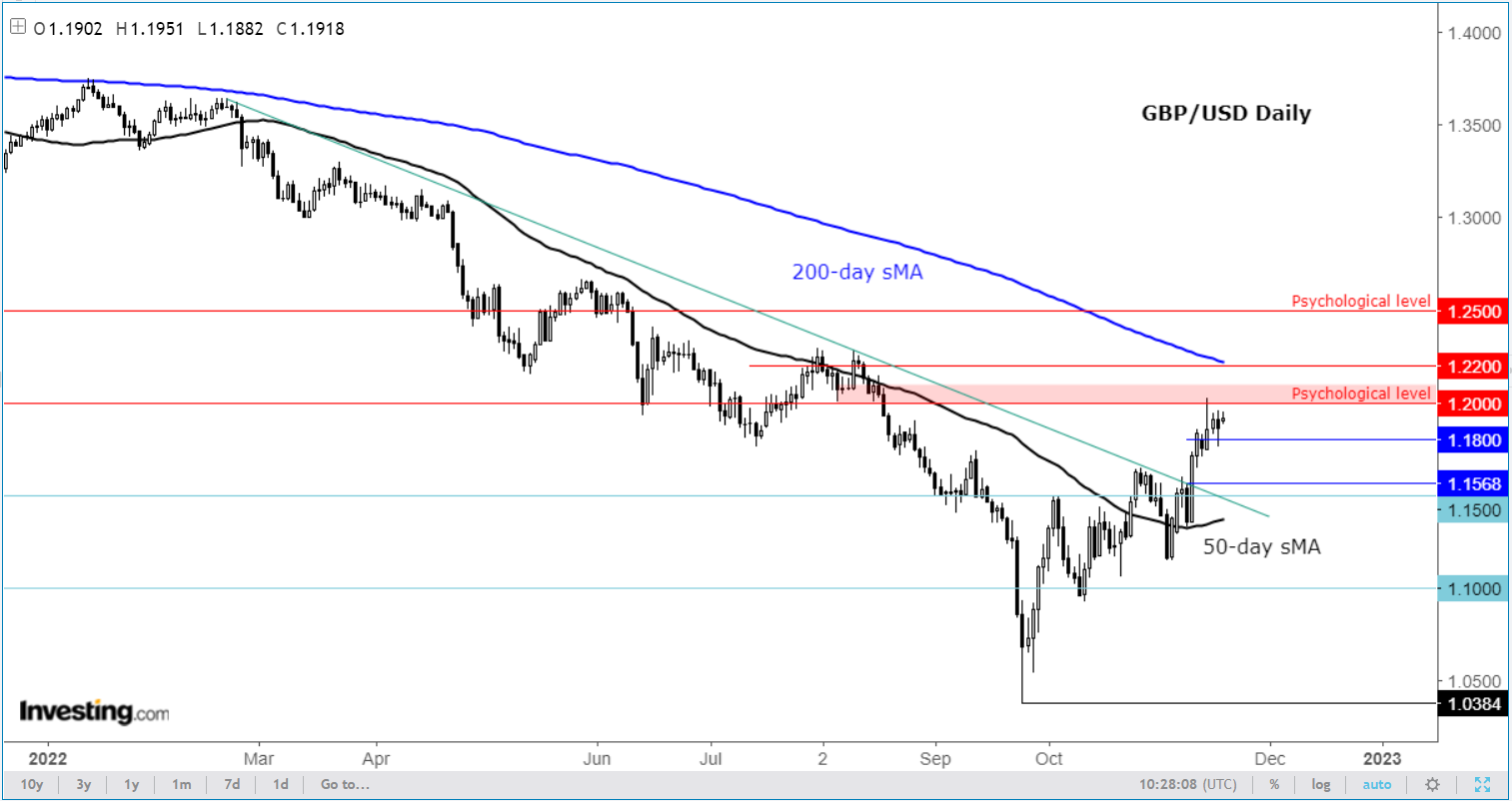- Improved risk appetite helps support GBP/USD
- U.K.’s darkening macro-outlook means risks skewed to downside
- The key level for bears to defend is 1.20; for bulls 1.15
The GBP/USD managed to rebound along with equities Friday morning as risk appetite improved, even though we didn’t have any major catalysts behind the move in risk assets. The U.S. dollar retreated a little, and we had some positive data out of the U.K., which may have helped push the exchange rate higher.
Still, after the big recovery from an all-time low, the rally looks fatigued. At best, I expect to see only a modest further upside for the cable amid a bearish macro backdrop for the U.K. economy. The medium-term risks are skewed to the downside, in my view.
Before discussing the macro factors further, have a look at the daily chart of the GBP/USD:
With the cable already testing the 1.20 handle this week, a near-term top may be in. For confirmation, a break of 1.1800 support is needed on a daily closing basis. If that happens, then there are not many other obvious support levels until the base of the recent breakout at around 1.1500 to 1.1570-ish.
On the upside, a potential break above 1.200 would expose the 200-day average for a test at around the old resistance circa 1.22 handle.
Risk Appetite Improves
It has been a mixed week for risk assets, with oil and copper falling sharply on Chinese demand concerns, while equities have been going sideways in a holding pattern. Although at one point on Thursday, it looked like equities would be heading lower, once again, there was no real follow-through in that move.
Markets are trying to figure out whether to lean towards the possibility of the Fed tilting to a more dovish stance amid expectations that inflation has peaked or shy away from excessive risk-taking after last week’s big up move and in light of fresh concerns over China—something which weighed heavily on some commodities yesterday.
Dollar Still Undermined – at Least for Now
FX markets have been reluctant to punish the dollar meaningfully after last week’s big drop on the back of that soft US inflation data. Several Fed officials have spoken this week, again re-iterating their fight against inflation and warning of more rate increases to come.
St. Louis Fed President James Bullard on Thursday said interest rates need to rise further to a 5%-7% range. A day earlier, San Francisco Fed President Mary Daly said a pause in rate hikes was “off the table.” As a result, the market’s pricing of terminal interest rates has gone back to 5% for May through July 2023.
Pound Rises Despite Gloomy U.K. Outlook
The pound may have found additional support from a slight improvement in U.K. data, with retail sales topping estimates with a gain of 0.6% month-over-month. Additionally, jobless claims beat estimates earlier in the week, as too did wages data.
Still, with annual inflation surging to 11.1% from 10.1% previously, real wages are falling. Consumer spending is thus likely to remain restricted. Many economists believe the U.K. is heading into a prolonged recession. With U.K. Chancellor Jeremy Hunt announcing £55 billion worth of tax rises and spending cuts, Britons face more pain for months or even years.
It is not clear how much of these risks are already priced in. But without a significant improvement in the U.K. macro backdrop, I think the downside risks will prevail for the cable.
Disclosure: The author currently does not own any of the instruments mentioned in this article.


